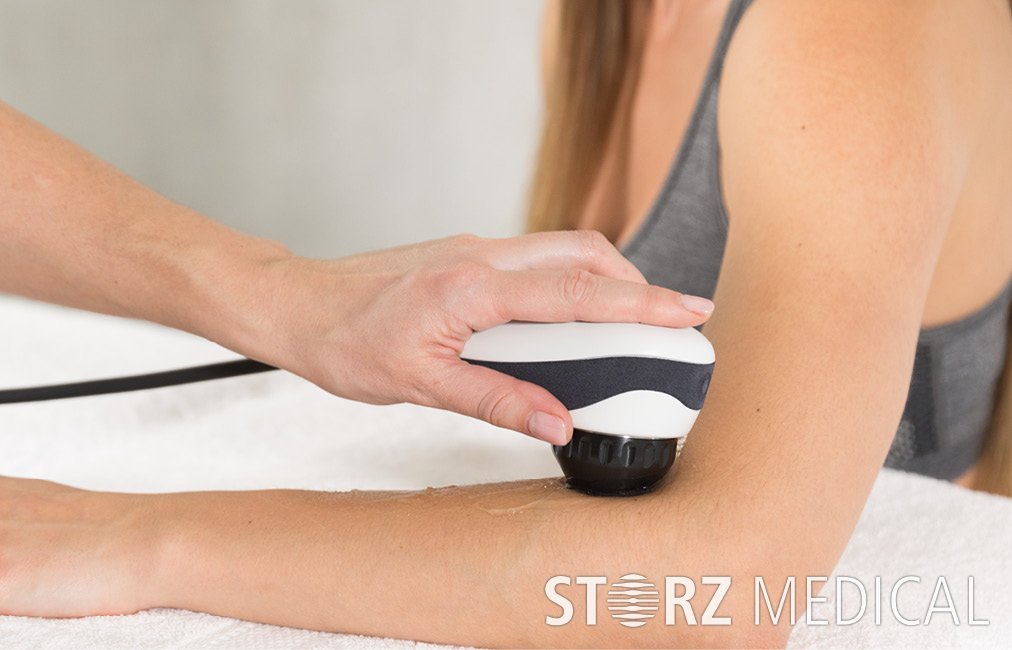Combining Vibration Therapy with Shockwave Technology
Devices capable of providing controlled and targeted vibration therapy to specific areas have the potential to improve metabolism and circulation, increase bone density and muscle mass, as well as alleviate joint pain and reduce stress. The vibrations transmitted to a patient’s body triggers muscle contractions and relaxations, facilitating the production of osteoblasts. A perfect example of this device would be the V-Actor® handpiece. A game changing complementary treatment to radial pressure wave for treating musculoskeletal disorders.
How does vibration therapy work?
It primarily targets increased tension affecting myofascial muscle structures resulting from conditions such as pain, spasticity following a stroke, or delayed onset muscle soreness (DOMS) experienced after sports activities. Muscle tone is mainly regulated by various mechanoreceptors present in muscles and tendons. Similar to focused and radial shock wave therapy, vibration therapy interacts with these receptors in a manner that varies based on factors like frequency, muscle location, and individual response.
In the context of pain treatment, the goal of vibration therapy is to stimulate mechanoreceptors to block pain transmission. This concept aligns with the neurophysiological gate control theory, pioneered by Ronald Melzack and Patrick D. Wall in pain research. The theory proposes that pain signals sent to the brain can be inhibited through a mechanism referred to as the “pain gate.” Consequently, either the pain sensation is significantly reduced or the patient may not feel it at all.
Dr. Karsten Knobloch noted that he “saw that vibration therapy was an excellent addition to combined shock wave therapy: epicondylitis in the forearm extensor musculature, calcaneal spurs and achillodynia in the gastrocnemius musculature are all examples of disorders that responded well.”
The Storz V-ACTOR® »HF« handpiece
The V-Actor® offers several advantages and benefits. Unlike its predecessor, it extends the frequency spectrum from 1–35 Hz to 1–50 Hz, allowing the use of frequencies between 36 and 50 Hz. In practice, this expanded range proves highly effective for deep myofascial stimulation by engaging muscle receptors like muscle spindles and the Golgi tendon apparatus. As a result, it promotes muscle relaxation, improves lymph flow, and delivers enhanced myofascial stimulation, benefiting the overall therapeutic experience.
The V-ACTOR® technology is lightweight, weighing just two pounds, and its main operating elements have been seamlessly integrated into the tablet.
This integration makes it more convenient for healthcare professionals to administer treatments to patients. Additionally, the device allows for individual parameter settings for various indications, incorporating treatment parameters recommended by experienced users. This ensures reliable pre-setting and facilitates effective treatment delivery.
Remington Medical offers Storz Medical patented V-ACTOR® technology as an optional add-on for their SD1 Ultra Radial Shockwave line as well as the MASTERPULS® line. Reach out today to learn more on how you can add this technology to your practice or current shockwave system!
To learn more about shockwave therapy Contact Us today!

